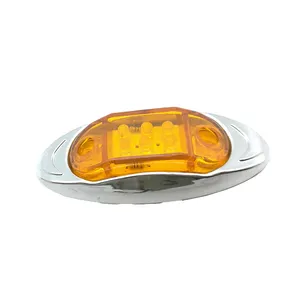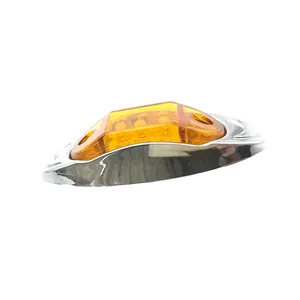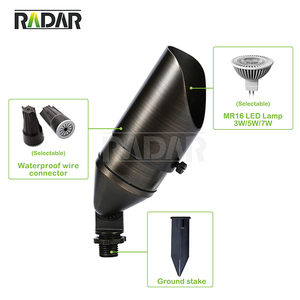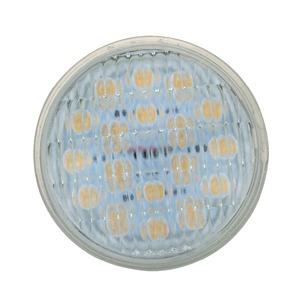(591283 products available)


























































































































































































































































12V LED lights have grown in prominence, transforming the lighting landscape in vehicles, boats, and RVs. These adaptable and energy-efficient light sources are available in various types, each with unique properties and applications. Here are some of the most prevalent types of 12V LED lights:
LED Strip Lights
Flexible and adaptable, LED strip lights are ideal for accent and ambient lighting. They come with adhesive backs for easy installation on various surfaces. Waterproof versions of these strips are also available, making them suitable for outdoor or interior lighting.
Dome Lights
These LED lights, which are often seen on ceilings, provide a wide area of illumination. They are a great option for internal lighting in RVs or boats because they are durable and energy-efficient.
Reading Lights
These little, directional LED lights are made to provide focused lighting for activities like reading. They are frequently utilized in bedrooms and on workstations in RVs and boats.
LED Flood Lights
Powerful illumination is provided by LED flood lights for outdoor lighting requirements such as camping, boat docking, or RV awnings. They are weather-resistant, making them perfect for outdoor use.
LED Rock Lights
LED rock lights are frequently utilized for off-road lighting. They are mounted on the vehicle's undercarriage to illuminate the road and provide additional visibility and safety during nighttime off-road adventures.
LED Light Bars
They are powerful lighting devices that are often used for off-road and auxiliary lighting. They are available in a range of sizes and are made to provide wide illumination.
Headlights
The 12V LED headlights represent a great improvement over conventional halogen headlights in terms of automotive lighting. They produce a bright, white light that enhances visibility and safety while driving.
Tail Lights
For added safety and visibility, LED tail lights are brighter and more energy-efficient alternatives to conventional tail lights. Many types have features like integrated turn signals and brake lights, enhancing the vehicle's visibility on the road.
LED Auxiliary Lights
LED lights that are used as accessories, such as bar lights for the dashboard or center console, are available. These lights can be utilized for interior lighting or to enhance the visibility of particular controls or displays.
Manufacturers of 12V LED lights give specifications that help buyers understand the capabilities of various products. Here are some of the common specifications for 12V LED lights:
It is important to maintain 12V LED lights so that they can last longer and function effectively. Dust and dirt can cause the lights to dim. Clean the lights regularly with a soft, dry cloth to remove dirt and dust. For hard-to-remove stains, use a damp cloth. Avoid using harsh chemicals when cleaning the LED lights, as they can damage the casing.
Check the LED lights regularly to make sure they are working properly. Inspect the wiring and connections for any signs of damage. Replace any damaged wires or connectors. Ensure that the LED lights are not overheating. Overheating can reduce the lifespan of the lights. To prevent overheating, give adequate space for airflow during installation and limit the use of high-brightness settings.
Choosing the right 12-volt LED light can be a daunting task, with so many options available. Understanding the purpose and function of these lights is important before making any choice. They are primarily used for lighting projects requiring low voltage, such as landscape lighting, interior lighting, and signage.
Another factor to consider is the brightness level. The brightness of the 12V LED light is determined by the lumen output. For those projects that require high brightness, LED lights with higher lumen output should be chosen. Conversely, LED lights with lower lumen output should be chosen for projects that require low brightness.
Furthermore, the color temperature of 12V LED lights is another important factor to consider when choosing them. These lights are available in different color temperatures, such as warm white, cool white, and daylight white. The project should determine the color temperature that will be suitable.
Quality is key when it comes to choosing any type of 12-volt LED light. There are various qualities of 12V LED lights from different manufacturers. Therefore, it is important to choose durable and reliable lights that will last for a long time. This will help save money that would have been used to replace the lights.
Additionally, consider the design and size of the 12-volt LED light. The design and size matter a lot because they affect how the light will fit into a particular space. Choosing the right design and size to fit into that space is important. Also, the 12-volt LED light should be compatible with existing lighting fixtures.
Furthermore, the level of flexibility of the 12-volt LED lights is important. If there is a need for lights that can be cut to fit a specific length or bent to accommodate different angles, choosing flexible and cuttable LED lights is important. Finally, when choosing 12-volt LED lights, consider the warranty and support services offered by the manufacturer.
It is easy to install 12V LED lights, and there are plenty of options for DIYers. The process may vary depending on the type and style of the lights, but the general steps are as follows.
Turn off the power supply
Before starting the installation, it's important to turn off the power supply to avoid accidents or damage to the lights.
Remove the old lights
For simple plug-and-play LED lights, just remove the old lights by unplugging them from the power source. Recessed LED lights may require a screwdriver to remove the housing and pull out the lights.
Connect the new lights
For LED strips, peel off the backing and stick them on the desired surface, then connect the positive and negative wires to the power supply. For lights with a different connector, ensure they fit well and are secure to avoid loose connections.
Secure the lights
After connecting, ensure the lights are well placed in their respective positions. Secure them to avoid dangling, which may cause damage over time.
Test the lights
After installing and securing the new 12V LED lights, turn on the power supply and test the lights to ensure they are working properly.
Q1: What are some common applications of 12V LED lights?
A1: 12V LED lights are used for various purposes, such as interior and exterior lighting in cars, trucks, boats, and RVs. They are also used for license plate illumination, dashboard lighting, footwell lighting, accent lighting, daytime running lights, and reading lights.
Q2: Are 12V LED lights energy efficient?
A2: Yes, 12V LED lights are energy-efficient. They consume less power than traditional lighting options and have a higher energy conversion rate, meaning they use most of the energy they receive to produce light. This efficiency reduces the load on the 12V power source and extends the battery life.
Q3: Can 12V LED lights be used for off-road or outdoor lighting?
A3: Yes, 12V LED lights are suitable for off-road and outdoor lighting. Many 12V LED lights are designed for off-road use and are rugged, durable, and weather-resistant, making them suitable for various environments and off-road adventures.
Q4: Are 12V LED lights available in different colors and color temperatures?
A4: Yes, 12V LED lights are available in various colors and color temperatures. They offer options for white light in different shades (cool white, neutral white, warm white) as well as colored lights (red, blue, green, yellow, etc.) to suit different preferences and applications.
Q5: Can 12V LED lights be dimmed or controlled with RGB options?
A5: Yes, some 12V LED lights can be dimmed, and there are options with RGB (red, green, blue) capabilities. Dimming controllers or RGB controllers can be used to enable dimming and customizable multi-color lighting effects, providing more versatility and customization options.